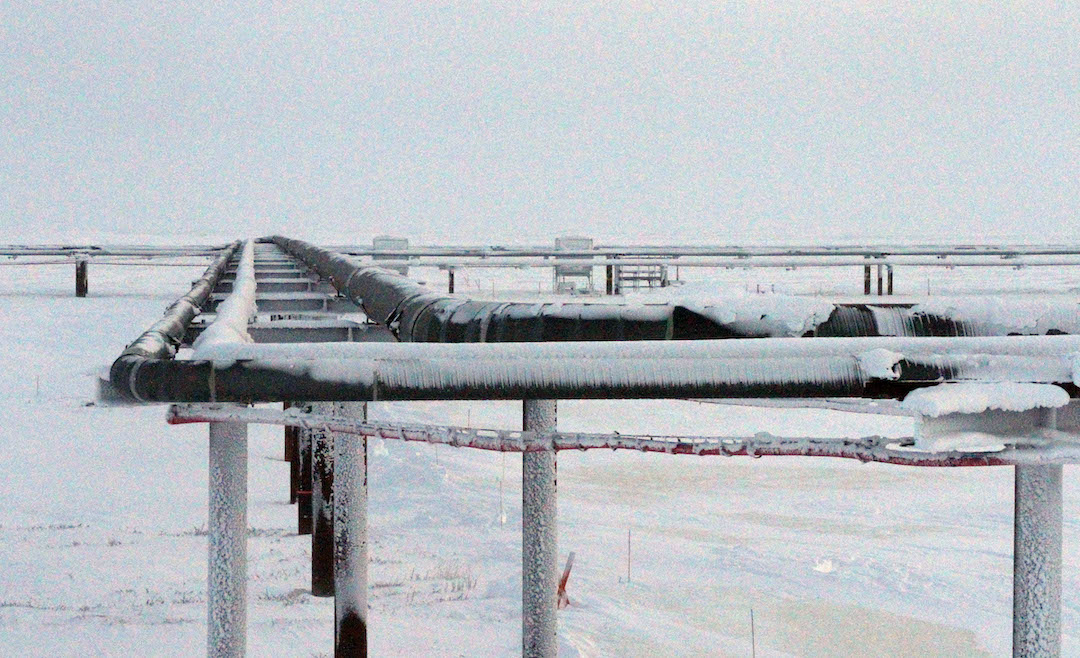President Joe Biden greenlighted an $8 billion drilling project in Alaska, triggering a storm of denunciation from environmentalists. Less than three weeks later, he put up for auction 73 million acres of federal waters in the Gulf of Mexico for oil and gas leases.
Biden’s Alaska decision contradicted his “no more drilling on federal lands” campaign promise. That approval and the auction, the first step toward drilling, also fueled a perception that he shrunk from fighting climate change.
Both of Biden’s moves were made in March, the same month in which the UN’s Intergovernmental Panel on Climate Change called for the world to immediately move away from fossil fuels. “There is a rapidly closing window of opportunity to secure a liveable and sustainable future for all,” it said.
Allowing more fossil fuel development — through the Alaska project and through an increase in drilling permit approvals that could lead to more projects — will increase greenhouse gas emissions. But to at least some extent, Biden was legally obligated to make the moves.
The increased emissions from drilling are expected to be far outweighed by the emission reductions from climate change initiatives in laws such as the Inflation Reduction Act.
The projects: 30 years of drilling, more leasing
Oil giant ConocoPhillips estimates that its Willow Reservoir project in Alaska will involve sinking up to 199 wells across three drilling sites for up to 30 years. The drilling is expected to produce about 1.5% of total U.S. oil production.
Environmental groups condemned Biden’s approval, claiming the project would release 239 million metric tons of greenhouse gases.
A vast majority of scientists agree that climate change is driven by greenhouse gases released into the atmosphere by human activity.
Biden’s lease sale opened up to auction 73 million acres of federal waters, though companies bought leases for only 1.67 million acres.
Why Biden approved the projects
Biden and his administration defended the Willow approval by saying that leases ConocoPhillips had are essentially contracts, and that refusing to allow the drilling could trigger legal action resulting in fines on the government.
Attorney Kassie Siegel, senior counsel of the nonprofit Center for Biological Diversity, one of the groups suing the federal government over Willow, said the Biden administration should have nevertheless denied the project because it has a legal duty to minimize environmental damage from any development it approves.
Other experts doubted the success of denying Willow.
John Leshy, former U.S. Interior Department general counsel, and Hugh Daigle, a University of Texas at Austin petroleum and geosystems professor, said the Biden administration likely would have been sued and lost had it denied the Willow drilling.
“From a political standpoint, perhaps there could have been something to gain by forcing a lawsuit, but the administration probably concluded that it would not have been worth the resources expended,” Daigle said.
Drilling approvals have increased since Biden took office.
His administration is granting applications for permits to drill on public and trial lands at a pace faster than the Trump administration at the same point. From the start of their administrations through March 27, Biden approved 7,118 permits and Trump 7,051, The Washington Post reported.
About the permit approvals, the Bureau of Land Management has said the bureau has taken a “balanced approach to energy development and management of our nation’s public lands.”
Federal auction for drilling is baked into climate law
The Inflation Reduction Act, despite being touted for its climate change provisions, also requires more drilling. It was a compromise to get the legislation passed.
The Gulf of Mexico lease auction, for example, was required in the bill, which Biden signed in August. That provision requires the Interior Department to sell onshore drilling leases when it offers leases for renewable energy development.
Another Gulf of Mexico lease sale is scheduled for September.
The law’s major steps against climate change include:
- The law included $260 billion in tax credits to boost investment in solar, wind, hydropower and other forms of renewable energy.
- It is expected to cut greenhouse gas emissions by 32% to 40% by 2030, compared to emission levels in 2005, according to independent researchers.
Daigle said the March lease sale was a compromise, mandated in exchange for granting offshore rights of way for solar and wind power.
The leasing requirement helped secure support from a conservative Democrat, Sen. Joe Manchin of West Virginia.
Does the U.S. need the oil?
The American Petroleum Institute, a trade association representing American oil and natural gas companies and industries, applauded the Willow approval as crucial to ongoing energy needs. It cited U.S. Energy Administration figures showing that 68% of energy consumption comes from oil and natural gas, compared with 12% for renewables.
Attorney Megan Gibson of the Niskanen Center, a nonpartisan think tank named for former President Ronald Reagan’s economic adviser, William Niskanen, said the federal government should work with developers to produce more renewable energy. Approving fossil fuel projects “hinders our ability to do exactly that and locks us into more of the same,” she said.
But Daigle said the Willow and Gulf of Mexico auction moves are not a “game changer” in terms of oil production. He also said that while some people argue that the U.S. is better off getting its oil from domestic sources than from overseas, oil is a globally traded commodity, so there is no guarantee that oil from Willow would be sold only to U.S. consumers.
At the same time, Willow oil could be important going forward.
Joseph Kantenbacher, a sustainability and environment professor at the University of South Dakota, said he expects total U.S. oil production to drop in the coming decades, so Willow’s expected peak production of 180 thousand barrels of oil per day “could become a larger slice of a shrinking pie.”
The U.S. was a net exporter of petroleum, which includes crude oil, as of 2021, according to the latest U.S. Energy Administration figures.
The difference was 8.54 million barrels per day of exports versus 8.47 million of imports, which have generally declined for more than a decade.
Preliminary figures for 2022 show a wider gap: 9.6 million barrels per day exports to 8.3 million imports.
By approving these projects, has Biden undone his climate change mitigation efforts?
Several experts said approving Willow is a step backward, in terms of moving toward more renewable energy development.
But the Inflation Reduction Act puts the U.S. on course to net-zero emissions by 2050.
Net-zero is achieved when all greenhouse gas emissions released by human activities are counterbalanced by removing carbon from the atmosphere.
Kantenbacher said greenhouse gases expected to be produced by Willow are the equivalent of two or three coal plants operating during the same period. But cuts in greenhouse gases enabled by the Inflation Reduction Act “are likely far more substantial” than greenhouse gases emitted by Willow, he said.
Moreover, said Daigle, the Inflation Reduction Act will eventually reduce demand for oil and gas, which could lead to reduced efforts to lease and drill in the Gulf of Mexico.
This fact check was originally published by PolitiFact, which is part of the Poynter Institute. See the sources for this fact check here.







